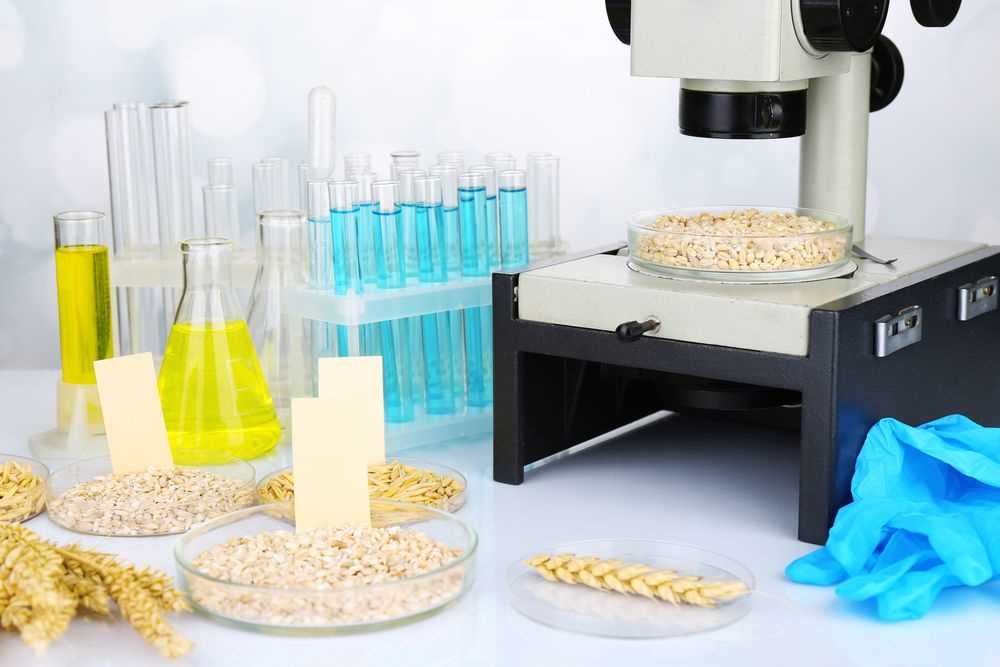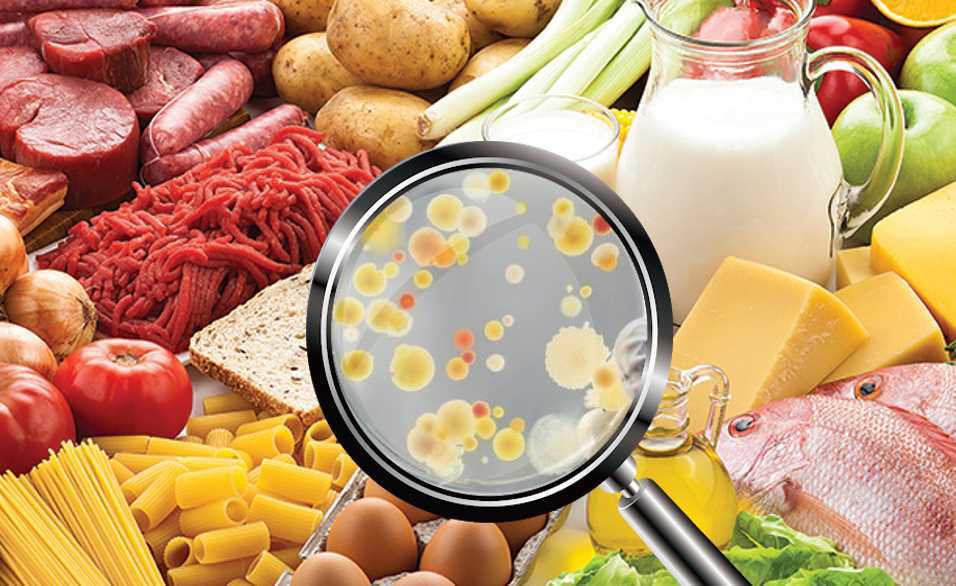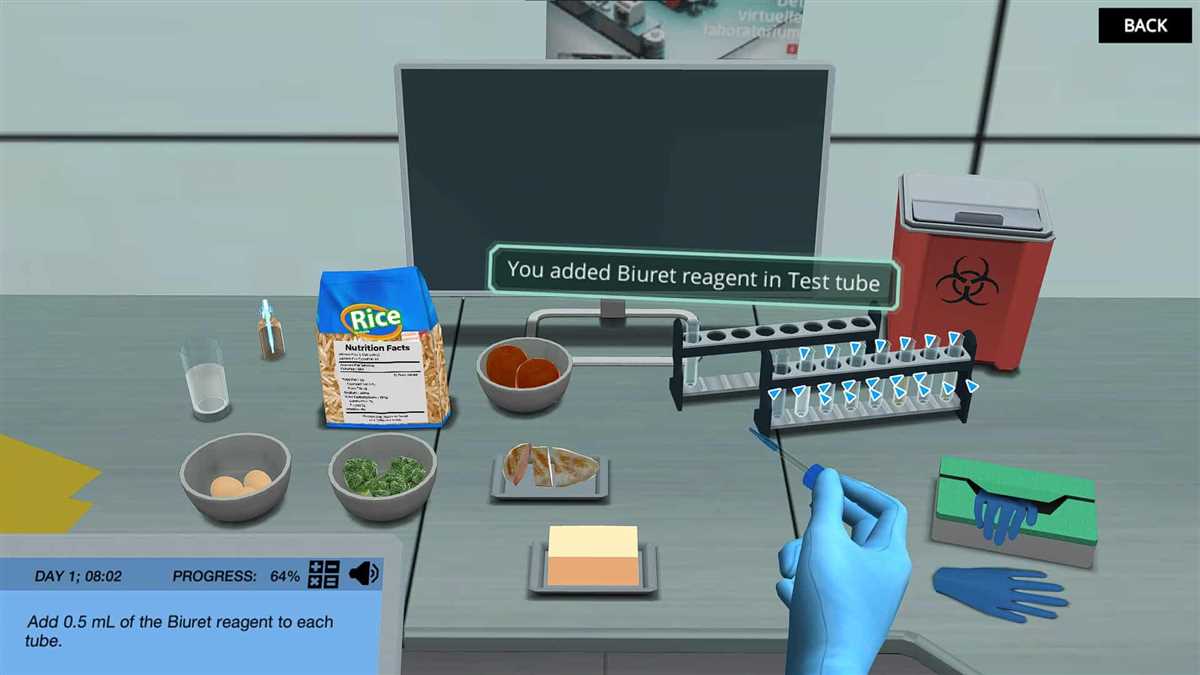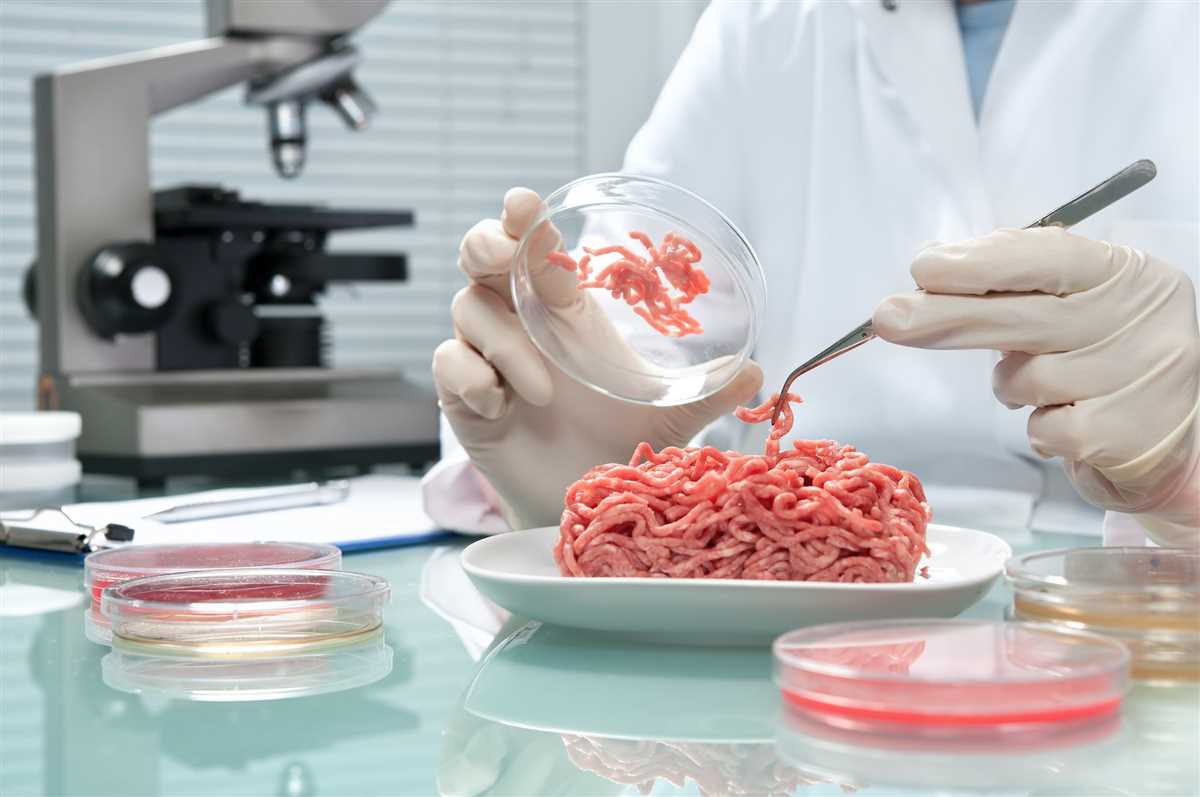
Food is composed of various macromolecules such as carbohydrates, proteins, and lipids. These macromolecules provide the necessary energy and building blocks for our bodies to function properly. Determining the presence and concentration of these macromolecules in food is essential for understanding its nutritional value.
In the labster “Biochemical tests for food macromolecules”, students have the opportunity to learn and practice different biochemical tests to identify the presence of carbohydrates, proteins, and lipids in various food samples. These tests involve the use of specific reagents that react with the macromolecules, resulting in color changes or precipitate formations.
Carbohydrates are one of the main sources of energy for our bodies. The labster provides instructions on how to conduct the Benedict’s test and the iodine test to detect the presence of reducing sugars and starch, respectively. The Benedict’s test involves heating the food sample with Benedict’s reagents, which will cause a color change from blue to green, yellow, or red if reducing sugars are present. The iodine test, on the other hand, uses iodine solution to detect the presence of starch, resulting in a dark blue or black color if positive.
Proteins play a crucial role in the growth and repair of tissues in our bodies. The labster demonstrates the Biuret test, which involves adding Biuret reagent to the food sample. If proteins are present, the color will change from blue to violet or pink. This test helps students identify the presence of proteins in different food samples and understand their importance in a balanced diet.
Lipids, commonly known as fats, provide a concentrated source of energy and help in the absorption of fat-soluble vitamins. The labster guides students in performing the Sudan III test, which uses Sudan III dye to detect the presence of lipids. If lipids are present, a red color will be observed at the top layer of the test tube. This test allows students to determine the lipid content in various food samples.
Overall, the labster “Biochemical tests for food macromolecules” provides a hands-on experience for students to learn and apply biochemical tests for the detection of carbohydrates, proteins, and lipids in food samples. This knowledge is crucial for understanding the nutritional value of different foods and making informed dietary choices.
Biochemical Tests for Food Macromolecules Labster

In the Biochemical Tests for Food Macromolecules Labster, students get the opportunity to understand the different types of macromolecules present in food and learn how to test for their presence using various biochemical tests.
The lab begins with an introduction to the four major macromolecules found in food: carbohydrates, lipids, proteins, and nucleic acids. Students learn about the specific functions and structures of each macromolecule and their importance in our diet.
Next, students conduct a series of tests to determine the presence of these macromolecules in various food samples. These tests include the iodine test for starch (carbohydrates), the Sudan IV test for lipids, the Biuret test for proteins, and the Benedict’s test for reducing sugars.
During the lab, students record their observations and interpret their results to identify the presence or absence of different macromolecules in the food samples. They also discuss the significance of these findings in terms of nutrition and food composition.
This lab provides students with hands-on experience in performing biochemical tests and reinforces their understanding of the different macromolecules present in food. It also helps them develop critical thinking and data analysis skills as they interpret their results and draw conclusions based on their observations. Through this lab, students gain a deeper understanding of how macromolecules contribute to the nutritional value of the food we consume.
Overview of Biochemical Tests

Biochemical tests are essential laboratory procedures used to identify and analyze different macromolecules present in food samples. These tests provide valuable information about the composition and quality of food, helping to ensure food safety and nutritional value. By performing biochemical tests, scientists and researchers can determine the presence and quantity of carbohydrates, lipids, proteins, and other macromolecules in a given food sample.
Carbohydrate tests: Carbohydrates are one of the main sources of energy in our diet. Biochemical tests for carbohydrates include the Benedict’s test, which detects reducing sugars like glucose and fructose. It involves heating the food sample with Benedict’s reagent, resulting in the formation of a colored precipitate if reducing sugars are present. The iodine test is another commonly used carbohydrate test that detects the presence of starch, forming a blue-black color when a starch sample is present.
Lipid tests: Lipids, such as fats and oils, play a crucial role in storing energy and providing insulation for our bodies. Biochemical tests for lipids include the Sudan III test, which detects the presence of lipids by producing a red-colored layer when a lipid sample is present. The emulsion test is another widely used test for lipids, where the sample is mixed with water and shaken vigorously. If a white emulsion forms, it indicates the presence of lipids.
Protein tests: Proteins, the building blocks of cells, are essential for growth and repair in the body. Biochemical tests for proteins include the Biuret test, which involves adding a few drops of Biuret reagent to the sample. If proteins are present, a violet color change occurs. Another widely used test is the Ninhydrin test, which detects the presence of amino acids by producing a purple color when heated with Ninhydrin reagent.
Overall, biochemical tests provide valuable information about the macromolecular composition of food samples. These tests help us understand the nutritional value and quality of the food we consume, ensuring that it is safe and meets the required standards. By analyzing the presence and quantity of carbohydrates, lipids, proteins, and other macromolecules, we can make informed decisions about our diet and support healthy eating habits.
Testing for Carbohydrates

Carbohydrates are one of the essential macromolecules found in food, providing energy for the body. It is crucial to identify and quantify carbohydrates in various food sources. Biochemical tests are commonly used for this purpose, allowing scientists to determine the presence and concentration of specific carbohydrates.
One of the most commonly used tests for carbohydrates is the Benedict’s test. This test detects reducing sugars such as glucose and fructose. The principle behind the Benedict’s test is that reducing sugars can reduce copper ions present in the Benedict’s reagent, resulting in a color change from blue to green, yellow, orange, or red, depending on the concentration of the reducing sugar.
Procedure:
- Prepare a sample solution by mixing the food sample with water and boiling it to extract the carbohydrates.
- Add an equal volume of Benedict’s reagent to the sample solution.
- Heat the mixture in a water bath for a specific time and temperature.
- Observe any color change in the mixture, indicating the presence of reducing sugars.
Another common test for carbohydrates is the iodine test. This test is used to detect the presence of starch, a complex carbohydrate made up of glucose molecules. Iodine reacts with starch to form a blue-black color, making it easy to identify the presence of starch in a food sample.
Procedure:
- Create a solution of the food sample by mixing it with water.
- Add a few drops of iodine solution to the food sample solution.
- Observe any color change in the mixture, indicating the presence of starch.
These are just a few examples of the tests used to identify and quantify carbohydrates in food. By performing these tests, scientists can better understand the composition of food products, ensuring accurate labeling and providing valuable information for nutritional analysis.
Testing for Proteins

Proteins are a vital macromolecule found in all living organisms. They play a crucial role in various biological processes, such as structural support, enzymatic reactions, and transportation of molecules.
There are several biochemical tests available to determine the presence of proteins in a given sample. One of the commonly used tests is the Biuret test, which relies on the reaction between proteins and copper sulfate. In this test, sodium hydroxide solution is added to the sample, followed by the addition of copper sulfate. If proteins are present, a violet color will develop, indicating a positive result for protein presence.
The Biuret test is based on the reaction of the peptide bonds in proteins with the copper ions. The copper ions in the copper sulfate solution form complexes with the peptide bonds, resulting in the color change. This color change occurs due to the coordination of the copper ion with the peptide nitrogen atoms, forming a violet-colored complex.
Another test commonly used for protein detection is the Ninhydrin test. In this test, a solution of ninhydrin is added to the sample. If proteins are present, they react with ninhydrin to form a purple/blue color, indicating the presence of proteins. The reaction between proteins and ninhydrin results in the formation of a colored compound called Ruhemann’s purple.
These tests provide a simple and rapid method for detecting the presence of proteins in various samples, including food products. They are often used in laboratories and the food industry to ensure the quality and safety of food products, as proteins are an essential component of a balanced diet. By using these tests, manufacturers can detect any adulteration or contamination in food products related to proteins, providing reliable results for quality control purposes.
Testing for Lipids

Lipids are a group of macromolecules that include fats, oils, and waxes. They are essential for energy storage, insulation, and protection in living organisms. When analyzing food samples, it is important to test for the presence of lipids, as they play a crucial role in the nutritional value and taste of food.
One common test for lipids is the Sudan III test. Sudan III is a lipid-soluble dye that stains lipids, giving them a red color. To perform this test, a small amount of the food sample is mixed with Sudan III solution. If lipids are present, the solution will turn red, indicating the presence of lipids in the sample. This test is often used to detect the presence of lipids in food items such as oil, butter, and fatty meat.
Another method to test for lipids is the emulsion test. This test involves mixing the food sample with ethanol and water, and then shaking the mixture vigorously. If lipids are present, they will form an emulsion, which is a cloudy or milky mixture. The formation of an emulsion indicates the presence of lipids in the sample. This test is commonly used to test for the presence of lipids in milk and cream.
In addition to these qualitative tests, there are also quantitative tests available to determine the amount of lipids in a food sample. One such test is the gravimetric method, which involves dissolving lipids in a solvent and then evaporating the solvent to obtain the lipid residue. The residue is then weighed to determine the amount of lipids present. This method provides a more accurate measurement of lipid content in a sample.
In conclusion, testing for lipids in food samples is important to determine their presence and quantity. The Sudan III test, emulsion test, and gravimetric method are commonly used to detect and quantify lipids. These tests are essential in providing information about the nutritional composition of food and can help in the quality control and labeling of food products.
Testing for Nucleic Acids
In the labster experiment, we performed biochemical tests to identify the presence of different macromolecules in food samples. One important class of macromolecules that we tested for is nucleic acids. Nucleic acids are essential biomolecules that store and transfer genetic information in living organisms.
The main types of nucleic acids are DNA (deoxyribonucleic acid) and RNA (ribonucleic acid). To test for the presence of nucleic acids in the food samples, we conducted the following tests:
- Diphenylamine Test: This test is used to detect the presence of DNA. A positive test result is indicated by the appearance of a blue color.
- Orcinol Test: This test is used to detect the presence of RNA. A positive test result is indicated by the appearance of a reddish color.
- Biuret Test: Although primarily used to test for proteins, the biuret test can also indicate the presence of RNA. A positive test result is indicated by a color change from blue to violet.
By performing these tests, we can determine whether the food samples contain nucleic acids, and if so, which specific type (DNA or RNA) is present. These tests are important not only in the field of food science but also in various other areas such as forensic analysis and genetic research.
In conclusion, the biochemical tests for nucleic acids provide a valuable way to identify the presence of DNA and RNA in food samples. These tests are relatively simple and can be performed in a laboratory setting. By understanding the composition of nucleic acids in different food sources, researchers can gain insights into the nutritional value and potential health benefits of these foods. Furthermore, the ability to detect nucleic acids can also be used in the identification of genetically modified organisms (GMOs) and the analysis of DNA or RNA-based pathogens in food products.
Q&A:
What is the purpose of testing for nucleic acids?
Testing for nucleic acids helps identify and detect genetic conditions, infectious diseases, and certain types of cancer.
What are some common methods used for testing nucleic acids?
Some common methods for testing nucleic acids include polymerase chain reaction (PCR), DNA sequencing, and nucleic acid hybridization.
How does polymerase chain reaction (PCR) work in nucleic acid testing?
PCR amplifies a specific segment of DNA or RNA, making it easier to detect and study. It is often used for diagnosing infectious diseases and genetic disorders.
What is the importance of nucleic acid testing in forensic science?
Nucleic acid testing plays a crucial role in forensic science as it allows for the identification of suspects and victims through DNA analysis.
Can nucleic acid testing be used for paternity testing?
Yes, nucleic acid testing, specifically DNA testing, can be used for paternity testing to determine biological relationships between individuals.